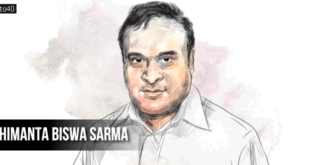 John Adams family had been in America for generations when he was born on October 30, 1735. His father was a farmer who had been Harvard educated. He taught his son to read before he entered school under Mrs. Belcher. He quickly moved into Joseph Cleverly’s Latin school and then studied under Joseph Marsh before becoming a student at Harvard College in 1751 graduating in four years and then studying law. He was admitted to the Massachusetts bar in 1758.
John Adams family had been in America for generations when he was born on October 30, 1735. His father was a farmer who had been Harvard educated. He taught his son to read before he entered school under Mrs. Belcher. He quickly moved into Joseph Cleverly’s Latin school and then studied under Joseph Marsh before becoming a student at Harvard College in 1751 graduating in four years and then studying law. He was admitted to the Massachusetts bar in 1758.
Family Ties
Father: John Adams – farmer. He held various local public offices.
Mother: Susanna Boylston – Little is known of her. She married again five years after her husband’s death.
Siblings: Two brothers, Peter Boylston and Elihu.
Wife: Abigail Smith – 9 years younger and the daughter of a minister. She loved reading and had a great relationship with her husband.
Children: Four children – Abigail, John Quincy (the sixth president), Charles, and Thomas Boylston.
Career Before the Presidency
Adams began his career as a lawyer. He successfully defended the British soldiers involved in the Boston Massacre (1770) with only two of the eight found guilty of manslaughter believing that it was important to ensure that innocents were protected.
From 1770-74, Adams served in the Massachusetts legislature and was then elected a member of the Continental Congress. He nominated Washington to be Commander-in-Chief and was part of the committee that worked to draft the Declaration of Independence.
John Adams’ Diplomatic Endeavors
He served as a diplomat to France with Benjamin Franklin and Arthur Lee in 1778 but found himself out of place. He returned to the US and served in the Massachusetts Constitutional Convention. before being sent to the Netherlands (1780-82). He returned to France and with Franklin and John Jay created the Treaty of Paris (1783) officially ending the American Revolution. From 1785-88 he was the first American minister to Great Britain. He later served as Vice President to Washington (1789-97).
Election of 1796
As Washington’s Vice President, Adams was the next logical Federalist candidate. He was opposed by Thomas Jefferson in a fierce campaign. Adams was in favor of a strong national government and felt France was a greater concern to national security than Britain while Jefferson felt the opposite. At that time, whoever received the most votes became president and second most became Vice President. The two enemies were elected together; John Adams received 71 electoral votes and Jefferson got 68.
Post Presidential Period
John Adams lived for over 25 years after failing to be reelected to the presidency. He returned home to Massachusetts. He spent his time learning and corresponding with old friends including mending fences with Thomas Jefferson and beginning a vibrant letter friendship. He lived to see his son, John Quincy Adams, to become president. He died on July 4, 1826, the same day as Jefferson’s death.
Historical Significance
John Adams was an important figure throughout the revolution and the early years of the presidency. He was one of only two presidents who signed the Declaration of Independence. The crisis with France dominated most of his time in office. He was faced with opposition to actions he took concerning France from both parties. However, his perseverance allowed the fledging United States to avoid war giving it more time to build and grow before having to worry about military action.
Events and Accomplishments of John Adams’ Presidency
Adams’ major accomplishment was to keep America out of war with France and normalize relations between the two countries. When he became president, relations were strained between the United States and France mainly because the French were making raids on American ships. In 1797, Adams sent three ministers to try and work things out. However, the French would not accept the ministers. Instead, the French Minister Talleyrand sent three men to ask for $250,000 in order to resolve their differences. This event became known as the XYZ Affair and caused public uproar against France. Adams had to act quickly to avoid war by sending another group of ministers to France to try and preserve the peace. This time they were able to meet and come to an agreement allowing the US to be protected on the seas in exchange for granting France special trading privileges.
During the ramp up for possible war, Congress passed the Alien and Sedition Acts. The Acts consisted of four measures designed to limit immigration and free speech. Adams used them in response to criticisms against the government and specifically the Federalists.
John Adams spent the last few months of his term in office in the new, unfinished mansion in Washington, D.C. that would be eventually called the White House. He did not attend Jefferson’s inauguration and instead spent his last hours in office appointing numerous Federalist judges and other office holders based on the Judiciary Act of 1801. These would be known as the “midnight appointments.” Jefferson removed many of them, and the Supreme Court case Marbury vs. Madison (1803) ruled the Judiciary Act unconstitutional resulting in the right of Judicial Review.
Adams was unsuccessful in his bid for reelection, being opposed not only by the Democratic-Republicans under Jefferson but also by Alexander Hamilton. Hamilton, a Federalist, actively campaigned against Adams hoping that Vice Presidential nominee, Thomas Pinckney, would win. However, Jefferson won the presidency and Adams retired from the presidency.
 Kids Portal For Parents India Kids Network
Kids Portal For Parents India Kids Network






